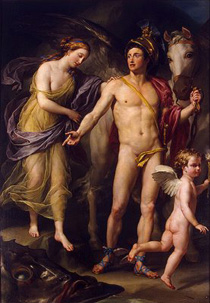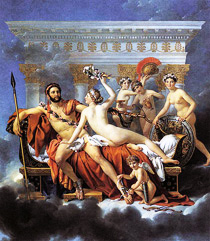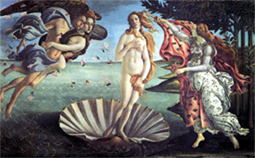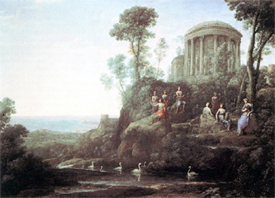 2
2From Pagan Belief to Neoclassical Style
At the time that Giovanni Pacini, Karl Briullov and Edward Bulwer-Lytton were creating their nineteenth-century Pompeian influenced melodramas, Europe and its colonies were increasingly being gripped by new visual and literary styles derived from artefacts found at Pompeii and Herculaneum. The emergent style became known as Neoclassicism, the most popular and enduring style in history. Its synthesis of romanticism and rationalism enabled it to cross virtually every social, political and cultural divide and its coincidence with the Industrial Revolution made it the world’s first truly global style. The discoveries at Pompeii and Herculaneum not only shaped much of the iconography of the technological revolution, but also became part of the zeitgeist that fed the growing Enlightenment movement in eighteenth century Europe. Material from the once buried cities along with a renewed interest in ancient Greek and Latin literature, mainly poetic and philosophical, provided the cultural values that the Enlightenment movement was searching for and seeking to promote. As the Neoclassical Style became increasingly embedded into the social fabric of the contemporary world, it inevitably re-framed understandings of the ancient material that created it. Inevitably, in the absence of any objective rationale, Roman wall-painting became associated with many of the aesthetic values attributed to Neoclassicism. Even the eminent Pompeian archaeologist August Mau who wrote one of the first authoritative books on Pompeii in the late eighteen hundreds, characterised and critiqued Pompeian wall-paintings using aesthetic values derived from Neoclassical painters such as Anton Raphael Mengs (1728-1779), Jacques-Louis David (1748-1825) and Jean-Auguste-Dominique Ingres (1780-1867) (figs.1-3).
Mau's critique typified the connoisseur approach to the wall-paintings. It priviledged the authors' 'taste' by discussing them as if viewed in an art gallery and not as part of a functioning household. In recent years the critical pendulum has swung in the opposite direction, replacing connoisseurship with analytical methods predicated upon politics and sociology, and Roman painting has not escaped the equally distorting effects of these methodologies. With the emergence of Reception Theory, however, there is now an increased awareness that material evidence, such as ancient painting, can have both an original and an evolving meaning as its audience changes with time.
None of the neoclassical painters, such as Mengs, that Mau used to evaluate Pompeian painting, were from Italy. All of them were drawn to it by the work of earlier Italian artists such as Sandro Botticelli (c.1445-1510) and Raphael (1483-1520) (figs.4&5), who were amongst the first to combine mythological themes with idealised views of the Italian landscape. Botticelli’s Primavera and The Birth of Venus, both produced in the mid to late fifteenth century, were entirely made up of classical references. In order to find Classical megalographia painting on this scale, we have to go back to pre-Christian times and paintings such as the Dionysian frieze in the Villa of the Mysteries, c.50 BC. Nicholas Poussin (1594-1665), Gaspard Dughet (1615-1675) and Claude Gellée (Le Lorrain 1600-1682) were amongst the first non Italian painters to study and paint on Italian soil. A beautiful irony emerges if one imagines Lorrain painting an idealised classical landscape in situ, on one of his many visits to the Campania region, whilst similar idyllic landscape paintings lie buried beneath his feet on the walls of houses yet to be discovered (fig.6).
 2
2
 4
4
3 Jupiter and Thetis, Jean-Auguste-Dominique Ingres, 1811
Musée Granet, Aix-en-Provence, France
4 Birth of Venus, Sandro Botticelli, c.1485, Uffizi, Florence
5 The Triumph of Galatea, Raphael, c.1511, Fresco, Villa della Farnesina, Rome, Italy
6 Mount Parnassus with Apollo and the Muses, Claude Lorrain, 1680, Museum of Fine Arts Boston
 6
6
|